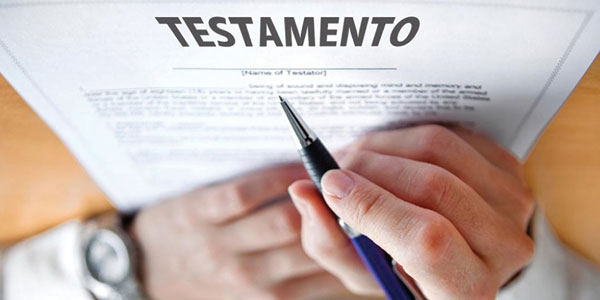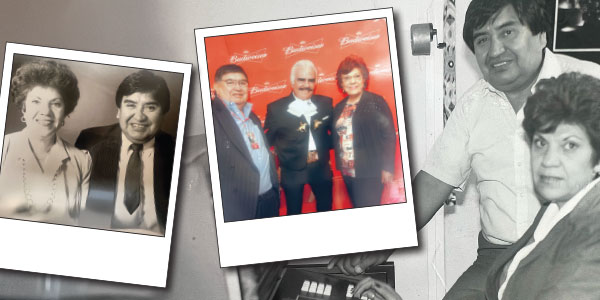
By Chris Hogan
We all want to do nice things for our loved ones. We go on family trips and celebrate life›s wins together. It›s sometimes difficult for us to consider the bad things that can happen in life, but we still have to be prepared. That›s why having a will is so important!
Not having a will in place leaves room for arguments among your loved ones and anyone else who might pop up wanting a piece of your stuff. That’s not okay! The last thing you want to do is add more stress to their lives after you’re gone. This is your legacy we’re talking about here. Do you want to leave that to chance?
Protecting your wealth—and your family—with a will is one of the best gifts you can leave to those you love.
What exactly is a will, and why is it important to have one?
Your grieving family members won’t automatically know what you wanted them to do with your money or your stuff—you need to tell them. That’s where your will comes in.
A will basically establishes a plan for how your stuff is distributed after you die. It’s your way of saying exactly who gets what and what goes where—and getting it down in writing.
According to a recent survey conducted by Ramsey Research, almost three out of four parents with kids (74%) don’t have a will in place. That’s a big problem!
How do you make a will?
Yanking out a sheet of paper and scribbling “My family gets all my stuff” isn’t going to cut it. But making a will really isn’t that hard. And in most cases, you don’t even need to go to an expensive lawyer to get one done.
Here are seven quick steps that will help you create a will that sticks:
1. Decide what to include in your will. This includes a list of your savings and investment accounts, plus the paperwork for your home and any other real estate you own. You also might want to include valuable possessions, like jewelry or cars.
2. Select your beneficiaries. Now you’ll get to decide how your stuff is split up and who gets what. Maybe you want half of your assets to go to your surviving spouse while the other half is split evenly between your kids. Whatever it is, get it in writing!
3. Choose an executor for your will. The executor is the person who will read the will and make sure that your wishes explained in the will are carried out.
4. Name guardians for your children. If you have young children, you need to decide who will take care of them after you’re gone.
5. Sign your will in front of witnesses. Don’t forget this step! A written will is not valid unless it’s signed and dated by the one writing the will, notarized by a notary public, and signed by two witnesses.
6. Let everyone know beforehand. Your will shouldn’t be a mystery novel. Do yourself a favor and read your will to your beneficiaries before you’re gone. Taking away the element of surprise could save a lot of headaches for them later on.
7. Store your will someplace safe. Make sure you put your will, along with other important documents, someplace that is waterproof, fireproof and accessible for loved ones to find. I personally have a wooden box of folders that contains my will and all related documents, filed nicely in a safe place where my family can easily reach it.
And if you need a helpful guide, this will preparation checklist can help you decide what you need to have in your will before you create one.
Don’t wait another day to get your will!
Once you’ve really thought through what you want to include in your will, you can prepare it in 20 minutes or less. There are plenty of places online that make it easy for you to create a will that’s specific to the state where you live.
No matter how much or how little you own, you need a will. Your loved ones will already be going through a lot when you pass away, and you don’t want to add stress to an already stressful situation.
________________________________________________________________________________________
Aquí le explicamos por qué necesita un testamento y cómo obtenerlo
Todos queremos hacer cosas buenas por nuestros seres queridos. Hacemos viajes familiares y celebramos los triunfos de la vida juntos. A veces es difícil para nosotros considerar las cosas malas que pueden suceder en la vida, pero aún tenemos que estar preparados. ¡Por eso es tan importante tener un testamento!
No tener un testamento deja espacio para discusiones entre sus seres queridos y cualquier otra persona que pueda aparecer queriendo un pedazo de sus cosas. Eso no está bien! Lo último que quiere hacer es agregar más estrés a sus vidas después de que se haya ido. Este es su legado del que estamos hablando aquí. ¿Quiere dejar eso al azar?
Proteger sus riquezas y su familia con un testamento es uno de los mejores regalos que puede dejar a sus seres queridos.
¿Qué es exactamente un testamento y por qué es importante tener uno?
Los miembros de su familia en duelo no sabrán automáticamente lo que quería que hicieran con su dinero o sus cosas; debe decirles. Ahí es donde entra su testamento.
Un testamento básicamente establece un plan sobre cómo se distribuirá sus cosas después de morir. Es su manera de decir exactamente quién se queda con qué y qué va a dónde, y de escribirlo por escrito.
Según una encuesta reciente realizada por Ramsey Research, casi tres de cada cuatro padres con hijos (74%) no tienen un testamento. ¡Ese es un gran problema!
¿Cómo se hace un testamento?
Sacar una hoja de papel y garabatear “Mi familia recibe todas mis cosas” no va a ser suficiente. Pero hacer un testamento realmente no es tan difícil. Y en la mayoría de los casos, ni siquiera necesita acudir a un abogado costoso para obtener uno.
Aquí hay siete pasos rápidos que lo ayudarán a crear un testamento que se mantenga:
1. Decida qué incluir en su testamento. Esto incluye una lista de sus cuentas de ahorros e inversiones, además de los papeles de su casa y cualquiera otra propiedad que posea. También puede querer incluir posesiones valiosas, como joyas o autos.
2. Seleccione a sus beneficiarios. Ahora usted podrá decidir cómo se dividen sus cosas y quién obtiene qué. Tal vez desee que la mitad de sus activos se destinen a su cónyuge sobreviviente, mientras que la otra mitad se divide en partes iguales entre sus hijos. Sea lo que sea, ¡consígalo por escrito!
3. Elija un albacea para su testamento. El albacea es la persona que leerá el testamento y se asegurará de que se cumplan sus deseos explicados en el testamento.
4. Nombre guardianes para sus hijos. Si tiene niños pequeños, debe decidir quién los cuidará después de que se haya ido.
5. Firme su testamento frente a testigos. ¡No olvides este paso! Un testamento escrito no es válido a menos que esté firmado y fechado por el que redacta el testamento, notariado por un notario público y firmado por dos testigos.
6. Que todos sepan de antemano. Tu testamento no debería ser una novela de misterio. Hágase un favor y lea su testamento a sus beneficiarios antes de que ya no esté. Quitar el elemento sorpresa podría ahorrarles muchos dolores de cabeza más adelante.
7. Guarde su testamento en un lugar seguro. Asegúrese de poner su testamento, junto con otros documentos importantes, en un lugar que sea resistente al agua, a prueba de fuego y accesible para que sus seres queridos lo encuentren. Personalmente, tengo una caja de carpetas de madera que contiene mi testamento y todos los documentos relacionados, archivados muy bien en un lugar seguro donde mi familia pueda alcanzarlos fácilmente.
Y si necesita una guía útil, esta lista de verificación de preparación del testamento puede ayudarlo a decidir qué necesita tener en su testamento antes de crear uno.
¡No espere otro día para hacer su testamento!










